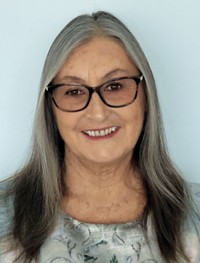Advertisement
Grab your lab coat. Let's get started
Welcome!
Welcome!
Create an account below to get 6 C&EN articles per month, receive newsletters and more - all free.
It seems this is your first time logging in online. Please enter the following information to continue.
As an ACS member you automatically get access to this site. All we need is few more details to create your reading experience.
Not you? Sign in with a different account.
Not you? Sign in with a different account.
ERROR 1
ERROR 1
ERROR 2
ERROR 2
ERROR 2
ERROR 2
ERROR 2
Password and Confirm password must match.
If you have an ACS member number, please enter it here so we can link this account to your membership. (optional)
ERROR 2
ACS values your privacy. By submitting your information, you are gaining access to C&EN and subscribing to our weekly newsletter. We use the information you provide to make your reading experience better, and we will never sell your data to third party members.
Policy
Connect with the Young and Young in Heart
by Anne T. O'Brien, District I Director
February 13, 2006
| A version of this story appeared in
Volume 84, Issue 7
What does the future hold for ACS? We don't know. We do know that it lies in our young members and in their scientific colleagues. They are the "us" of our ACS future.
We in ACS are not the only ones who need them-witness "Gathering Storm," the National Academy of Sciences report, about which Diane Grob Schmidt wrote an ACS Comment (Dec. 5, 2005, page 65). If we are to lead, we need our young to study, then work and innovate, in science, math, and engineering-the underpinning of technological innovation and our economic health.
The young must sense that we are a welcoming home. We have to interact and communicate in ways that are familiar and useful to them. We need to welcome them into the society early, when they are students establishing who they are.
How do we make the ACS appeal to the young in heart? By being pertinent, exciting, relevant, and comfortable.
Our content is pertinent and exciting-it is our journals, C&EN, chemistry.org, the minds and imaginations of members. Chemistry is the fascinating "how" that enables our understanding of cells and genetics, of illness and healing, of nano- and cosmic-scale transformations, of new materials and new solutions. This great integrator melts interstices and melds disciplines; it enables us to understand and "work" matter to serve humankind.
How do we demonstrate that "we're with it" and "we're for you" in a relevant, comfortable way? Our medium is our message.
Let the Web sing! The Web Presence Initiative will transform the way we interact, learn, and work together. This ACS Board-funded multiyear effort will bring powerful functionality (think Amazon and Google) to members, journal authors, editors, reviewers, and the public.
The new ACS Web will be user-centered, interactive, flexible, collaborative, easy to use, and attractive. It will provide first-rate navigation, searching, and community-building tools. I hope you will find it all you can imagine and want. I hope 18- and 20-year-olds will find it all they can imagine and want!
This Web project is in motion. The organizational structure, information architecture, and concept modeling are on schedule. Web communities for local section, division, and committee webmasters, and for biotechnology industrial scientists, are in pilot.
New search and analytic tools will be selected, content management tools will be evaluated, and migration strategies will be developed. A board advisory group has been named; ACS members will be invited and drawn into the process, and your suggestions welcomed. An information technology workshop is planned for June.
Much has been done; more has begun. As chair of the Committee on Professional & Member Relations (2001-03), and as a member of the board, I have encouraged use of contemporary electronic technology to serve members. I need your ideas. How do you suggest we make young and multi/interdisciplinary scientists feel at home? Write me at ronanne@attglobal.net. Thank you!
Views expressed on this page are those of the author and not necessarily those of ACS.
Possibilities
Would You Like To ...
Participate in interactive online conversations around ACS-published journal articles? Engage in dialogue and create a community of like-minded inquirers?
Listen to chemistry news on your computer, or on an iPod while you exercise? A Jan. 30 Wall Street Journal article describes use of podcasts as marketing tools. When he was ACS president last year, Bill Carroll podcast from his National Chemistry Week Extreme Tour. You may download, install, and listen. Just search for "podcast extreme" on chemistry.org.
Attend ACS-run virtual meetings on focused topics when you cannot travel, pre??sent your research findings, and preserve the possibility of publishing them in ACS journals?
Work online collaboratively with colleagues to create a book, a white paper, a taxonomy, or a syllabus via wiki? You already know the Wikipedia, but that is only one application of this collaborative creation tool.
Use online games to teach chemistry? ACS could serve as a repository for (serious) learning games.
Be alerted to additions or changes on Web pages or items of your choosing because they are of interest to you? RSS (Really Simple Syndication) does just that; it is available now for journals, C&EN, and some divisions, including the Division of Medicinal Chemistry. Other Web pages of interest to you could be similarly enhanced.
E-learn what you need to learn, when you have time, at your own pace, via low-cost, short "chunks" of learning, available anytime? Distinct from extended short courses with live instructors, these briefer self-paced offerings could assist in career development, instruct on instrumental methodologies, and introduce relatively new areas or fields in which you may not work but about which you want to learn.
Discover new items immediately because your group communicates via a blog-the latest items are always up front? Enjoy Carroll's tour by searching for "blog extreme" on chemistry.org.
Review a list of electronic e-mail alerts/newsletters (e.g., C&EN, chemistry.org, and others) available from ACS, and choose precisely which you want to receive? You may do this by searching for "e-mail alerts" on chemistry.org.






Join the conversation
Contact the reporter
Submit a Letter to the Editor for publication
Engage with us on Twitter